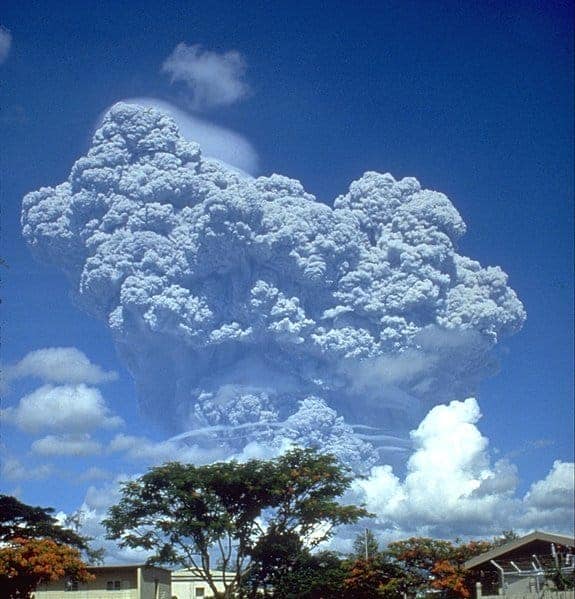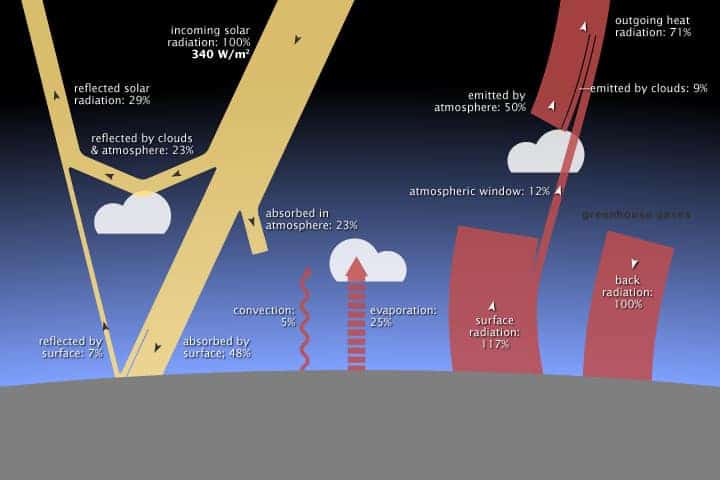A recent comment to the Air Quality Matters post “Why opacity cannot be the singular clean-air determinant” reads: “Climate stories have been dominating worldwide headlines in recent months. It seems that now more than ever, we are becoming increasingly aware of the effect of pollution on both our environment and on our health.”
Yes they have, that is, that world headlines in recent months have been dominated by climate stories. It is to this point that today’s discussion is devoted.
In fact, former Vice President Al Gore gave an address on climate at the Democratic National Convention, done virtually, mind you, but still. He delivered an impassioned, convincing address and with tremendous conviction. Though a nagging point persists: Will all who heard Gore’s speech – or other similar messages – buy in? That’s the question.
So, there is a given amount of radiant energy coming to the earth from the sun. What happens with this energy is: part of it gets reflected back into space while the rest gets absorbed by the earth’s atmosphere, its oceans and land. The part that’s reflected back into space (29 percent according to Rebecca Lindsey at NASA Earth Observatory), is on account of cloud cover and reflectivity attributed to snow, ice and even to earth’s surface water. The remaining portion is 71 percent, again, according to Lindsey.
At any rate, there is a condition on earth known as “radiative equilibrium.” Here is just a part of what Lindsey wrote on the subject.
“When the flow of incoming solar energy is balanced by an equal flow of heat to space, Earth is in radiative equilibrium, and global temperature is relatively stable. Anything that increases or decreases the amount of incoming or outgoing energy disturbs Earth’s radiative equilibrium; global temperatures rise or fall in response.” This condition is what is referred to as “the net heating imbalance.”
Okay, so how does this relate to climate or climate change?
As Lindsey further explained, “The net heating imbalance between the equator and poles drives an atmospheric and oceanic circulation that climate scientists describe as a ‘heat engine.’ … The climate is an engine that uses heat energy to keep the atmosphere and ocean moving. Evaporation, convection, rainfall, winds, and ocean currents are all part of the Earth’s heat engine.”
And, something else really important to consider is:
“Just as the major atmospheric gases (oxygen and nitrogen) are transparent to incoming sunlight, they are also transparent to outgoing thermal infrared,” Lindsey submitted. “However, water vapor, carbon dioxide, methane and other trace gases are opaque to many wavelengths of thermal infrared energy.”
Seventeen percent surface-thermal infrared radiation is redirected from the sun back toward space, Lindsey emphasized. Of that only 12 percent actually makes it to space; five-to-six percent staying put in the atmosphere. The latter is caused from the molecules of atmospheric greenhouse gases absorbing such. When this happens, the molecules’ temperatures climb.
Moreover, any of the heat these molecules radiate both flows to space or drops to the surface of the earth and is thus absorbed. This causes an elevation in the earth’s surface temperature. Apart from warming caused directly from the sun, heating of earth this way is what is referred to as the “natural greenhouse effect.”
“The natural greenhouse effect raises the Earth’s surface temperature to about 15 degrees Celsius on average—more than 30 degrees warmer than it would be if it didn’t have an atmosphere,” Lindsey related.
Changes to Earth’s radiative balance can cause a subsequent shift in temperature one way or the other. The way this happens, as Lindsey explained, is thus:

“Any changes to the Earth’s climate system that affect how much energy enters or leaves the system alters Earth’s radiative equilibrium and can force temperatures to rise or fall. These destabilizing influences are called climate forcings. Natural climate forcings include changes in the Sun’s brightness, Milankovitch cycles (small variations in the shape of Earth’s orbit and its axis of rotation that occur over thousands of years), and large volcanic eruptions that inject light-reflecting particles as high as the stratosphere. Manmade forcings include particle pollution (aerosols), which absorb and reflect incoming sunlight; deforestation which changes how the surface reflects and absorbs sunlight; and the rising concentration of atmospheric carbon dioxide and other greenhouse gases, which decrease heat radiated to space. A forcing can trigger feedbacks that intensify or weaken the original forcing. The loss of ice at the poles, which makes them less reflective, is an example of a feedback.”
Lindsey adding, “The changes we have seen in the climate so far are only part of the full response we can expect from the current energy imbalance, caused only by the greenhouse gases we have released so far. Global average surface temperature has risen between 0.6 and 0.9 degrees Celsius in the past century, and it will likely rise at least 0.6 degrees in response to the existing energy imbalance.
“As the surface temperature rises, the amount of heat the surface radiates will increase rapidly …. If the concentration of greenhouse gases stabilizes, then Earth’s climate will once again come into equilibrium, albeit with the ‘thermostat’—global average surface temperature—set at a higher temperature than it was before the Industrial Revolution.”
By virtue of today’s discussion, this should eliminate much of the uncertainty.
To learn more, check out: “Climate and Earth’s Energy Budget” by Rebecca Lindsey at NASA Earth Observatory here.
Images: Ernest Orlando Lawrence Berkeley National Laboratory (upper); Robert Simmon, NASA, adapted from Trenberth et al. 2009, using CERES flux estimates provided by Norman Loeb (middle); U.S. Geological Survey Photograph taken by Richard P. Hoblitt (lower)
This post was last revised on Aug. 22, 2020 @ 12:40 p.m. Pacific Daylight Time.
Published by Alan Kandel


